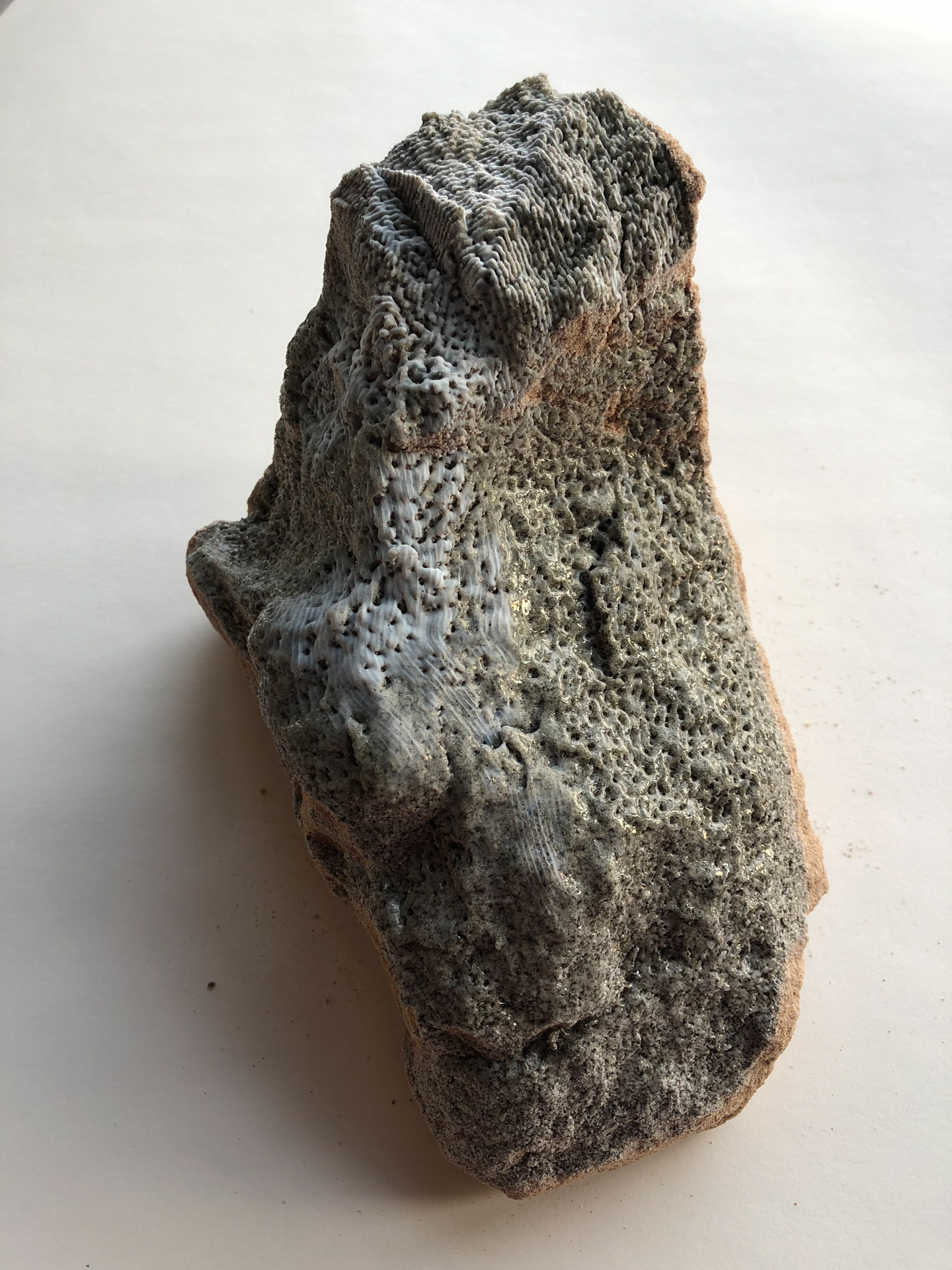Current Investigations
Something I like to think about on my own time is the relationship to seeing as a human with eyes, and seeing as a photographer through a lens onto either physical film, or a digital reconstruction of light particles that hit a sensor (working, technically, much like light-sensitive film).
On the fourth and topmost floor of RISD’s Metcalf Studios, in Room 401, the Glass Department has amassed a treasure-hoard of silicate-based samples for study in a long narrow vitrine. As part of the Graduate Glass Studios, the Graduate classes of ’19 & ’20 have begun to organize, catalogue, research, and write about the objects in the vitrine collection. This first installment focuses on some naturally occurring forms of glass: obsidian, fulgurites, and moldavites.
The idea of the shift in scales of seeing affecting our perception of what we see is multi-disciplinary one. O’Doherty here talks about a distinction between vertical shifts of scale and horizontal ones. He doesn’t argue for or against truth (or a truth.) His departing spacecraft of History places time, when dealt with at a macro scale, as a vertical axis.
Over the Spring semester I began experimenting with laser engraving on sand. The process began without any expectations of what would come out of it — I just liked the idea of shooting a laser into a new material. I had a plenty of experience using a laser-cutter, but mainly with thin sheets of wood, mdf, cardboard, and metal. In this case I was putting in much larger, three-dimensional blocks of sand. This meant that I had to teach myself new settings to input into the machine: how do I focus onto a 3D surface? What power and speed do I use? And what will happen to the sand?
Studying this book is a full body exercise. The act of reading is becoming an illustration of bones and joints and muscles and skin. I focus on the tension in the muscles of my arm as I slip the book out of its box, on the soft cushion of my palm as I carry it to the table, on the texture of my fingertips as I touch the pages.
The Glass Department’s Visiting Lecturers Series for Fall ‘18 includes a variety of distinguished visitors from various backgrounds, including curators, alumni, and artists engaging with various media and processes.
This year's Glass Research Fellow, Jen Bervin, will be taking part in the Nature Lab at Risd's exhibition and symposium, Biodesign: From Inspiration to Integration.






